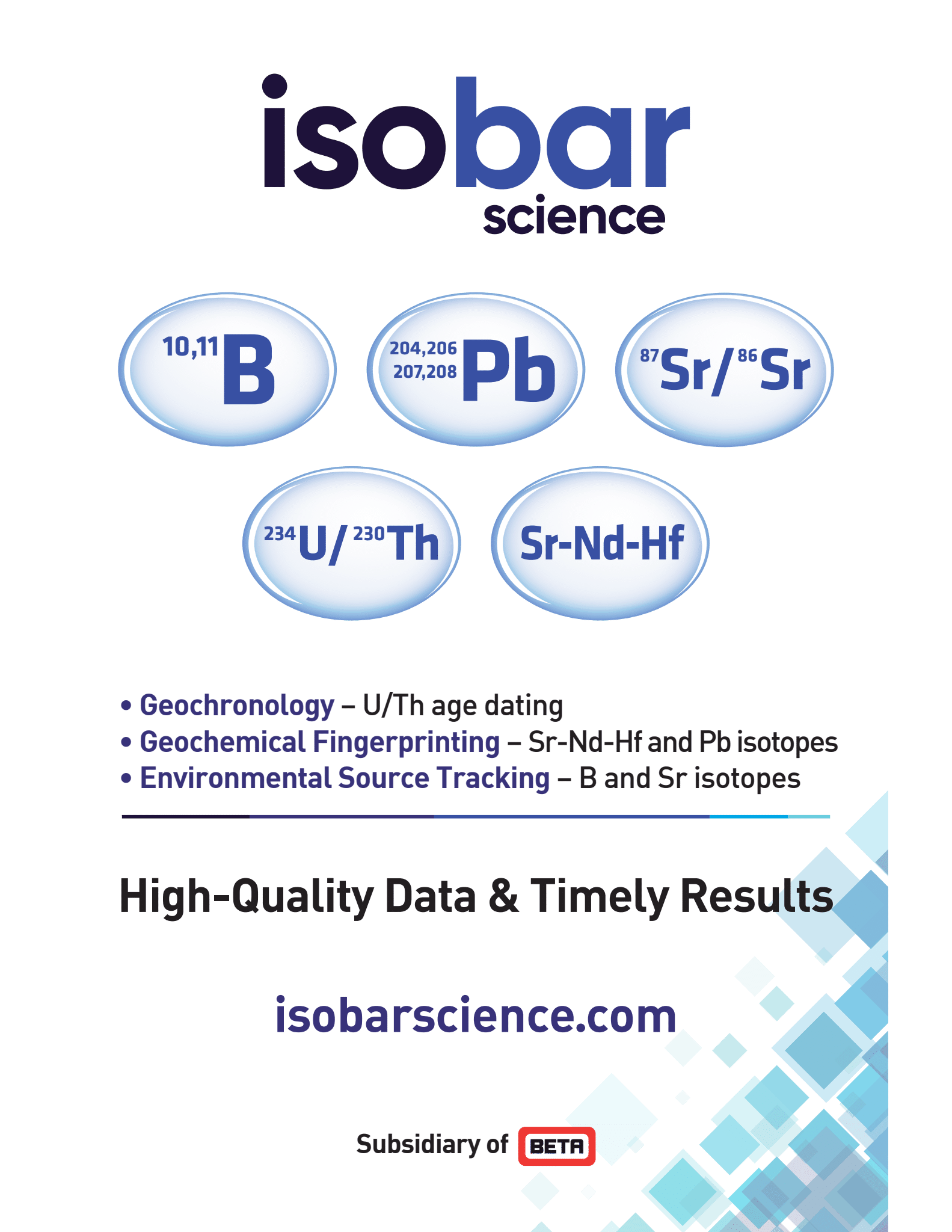This post is sponsored by Beta Analytic.
Isobar Science, a subsidiary of Beta Analytic, specializes in complex isotope services. Services include U-Th dating, strontium (87Sr/86Sr) isotopic analysis, Sr-Nd-Hf-Pb isotope geochemical fingerprinting, and boron (11B) and strontium (87Sr/86Sr) environmental source tracking. Isotope measurement is performed on a multicollector inductively coupled plasma mass spectrometer (MC-ICP-MS) equipped with multiple peripherals including a laser ablation system. Isotope measurement is applicable to several archaeological research themes including paleoclimatology, environmental reconstruction, and geochronology. In particular, Uranium-Thorium, Lead, and Strontium isotopic analyses have applications in the field of archaeology.
Uranium-Thorium (U-Th) dating can be used to reveal chronologies to answer questions in paleoclimate research and aid in environmental reconstruction. While Carbon-14 dating has a limit of up to 50,000 years, U-Th dating has a much higher limit of up to 500,000 years, making it an excellent option for research that deals with older samples and timescales. U-Th dating is applicable to samples that contain calcium carbonate (CaCO3) including cave art, speleothems, flowstones, coral, and shell.
Lead (Pb) isotope ratios are effective for answering questions about the nature and timing of certain geological processes. One of the applications of Pb testing is geochemical fingerprinting. Geochemical fingerprinting identifies different lead isotope patterns in rock that are associated with specific areas on earth. For archaeological studies, geochemical fingerprinting can be used to establish the geological origin of metals used to make some metal artifacts. It can also be used to date glacial age, recent sediments, and peat deposits. Pb dating is applicable to various sample types including igneous and metamorphic rocks, mineral dust, marine and lacustrine sediments, bones, tooth enamel, and soil.
Strontium (Sr) isotope data can be used for migration studies and forensic studies. Dating applies to sample types including bone, wool, tooth enamel, and others. Migration studies using Sr isotopes are possible because a 87Sr/86Sr ratio exists for each region of the world, depending on the area’s unique water sources and geology. Living things possess the Sr isotopic signature that originates from their habitat. Human and animal migration from one region to another exposes them to different Sr signatures. Thus, measuring the 87Sr/86Sr ratios in bones, teeth, and plant material allows archaeologists to study human and animal migration, trade, and lifestyle characteristics.
Visit isobarscience.com to find out more about our services, discover resources including webinars and sample preparation guides, or obtain a quote.


